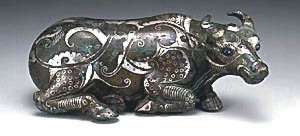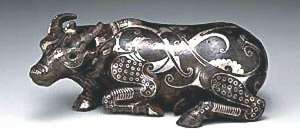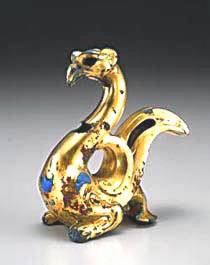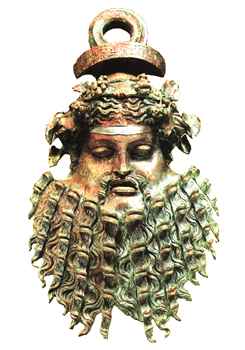Exhibition:
Animals in Ancient China
In ancient times, various cultures evolved in the area that is now known as China, a country that commands the large part of Eurasia. In these cultures, figurines and designs portraying animals were used as talismans and charms to assure eternal life, good government, a blissful afterlife, and good fortune. Sometimes animal designs, employing either full bodies or only the face of an animal, appeared on ceremonial bowls. These designs both averted evil and promised a better life. More realistic renderings of animals reflect the cultural interactions between the diverse peoples who made the area their home and foreigners.
During the Miho Museum's Spring Season, these artifacts will be on view in the Chinese area of the South Wing.
|
Pair of recumbent oxen
 
|
|
Ornament in the shape of mythical animal
China, Western Han period,
3rd-1st century B.C. 
|





4th-3rd century B.C.